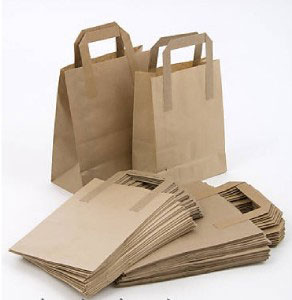Paper carrier bag Producers are preparing for increased demand

CEPI Eurokraft, the European Association for Producers of Sack Kraft Paper for the Paper Sack Industry and Kraft Paper for the Packaging Industry and EUROSAC, the European Federation of Multiwall Paper Sack Manufacturers, said that paper carrier bag producers are now preparing for increased demand for their products when fossil-based plastic bags in supermarkets and other shops have to be replaced.
The European Parliament voted in favour of an amendment to the Packaging and Packaging Waste Directive. The new legislation is designed to regulate plastic carrier bags less than 50 μm thick.
The legislation gives national governments two ways to implement the regulation: they can either reduce consumption to 90 plastic carrier bags per citizen/year by 2019 and 40 bags/year by 2025 or introduce a mandatory charge for shoppers by 2018. Today, every EU citizen uses about 198 plastic carrier bags/year. CEPI Eurokraft said: “The aim of this new legislation is to reduce plastic waste in our environment. Every year, more than 8 billion plastic bags end up as litter in Europe. Littering of plastic carrier bags leads to a widespread problem of rubbish in water bodies, threatening aquatic ecosystems worldwide. Furthermore, littering of plastic carrier bags is an inefficient use of resources since they are made from fossil raw materials. As an alternative, paper carrier bags have some exceptional environmental credentials that no other bag types have: they are natural, biodegradable and recyclable, come from an infinitely renewable resource and are produced in a sustainable manner. Paper carrier bags are strong, have excellent printability, can have either a glossy or a smooth surface and have very good stiffness to keep the packed goods safe.”





